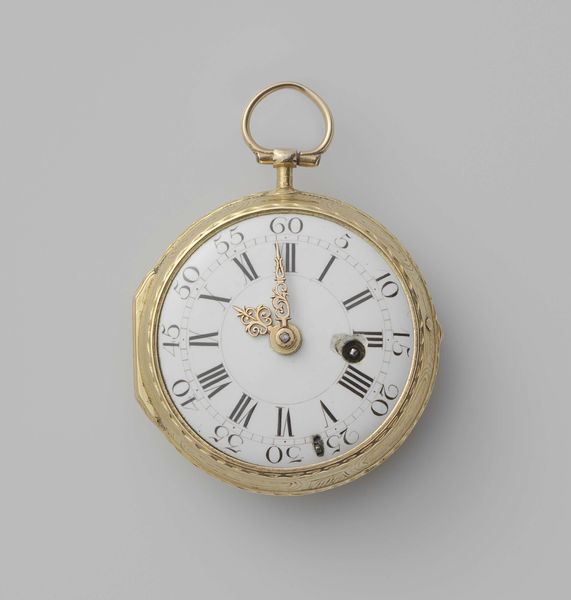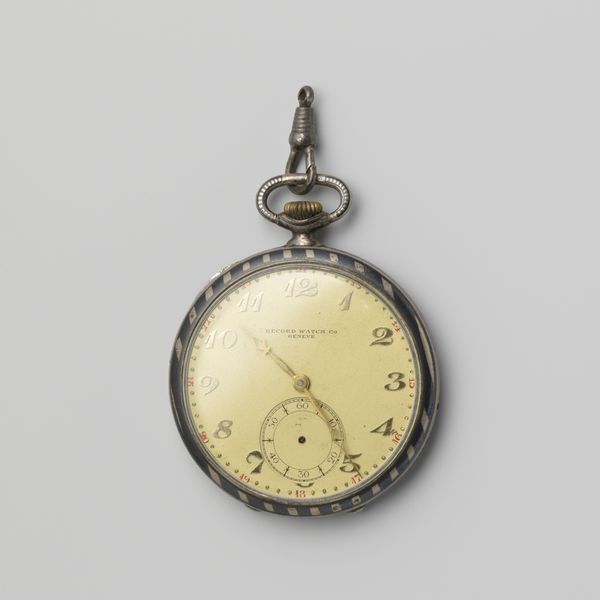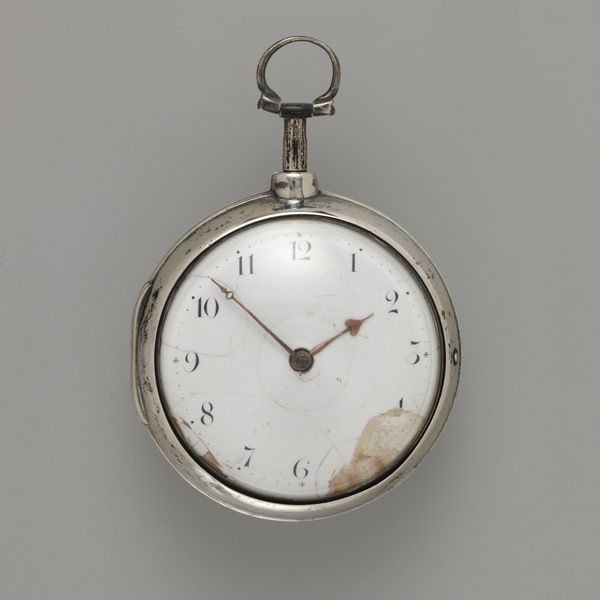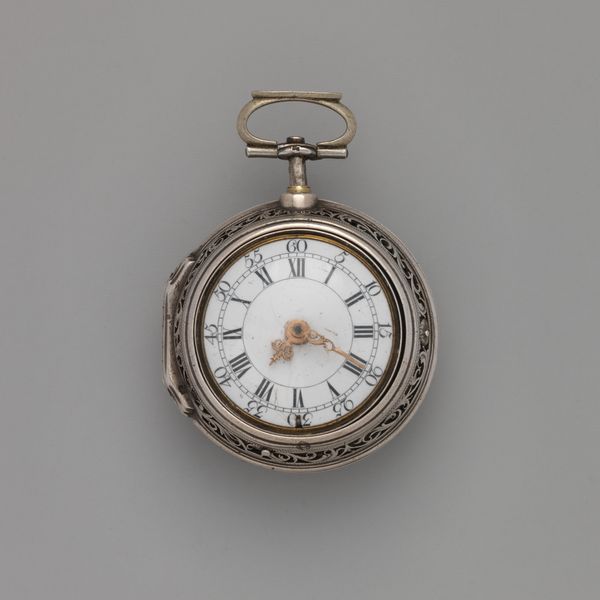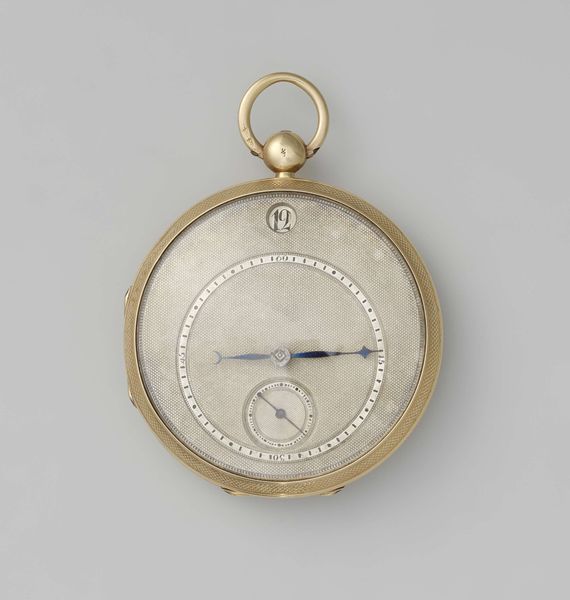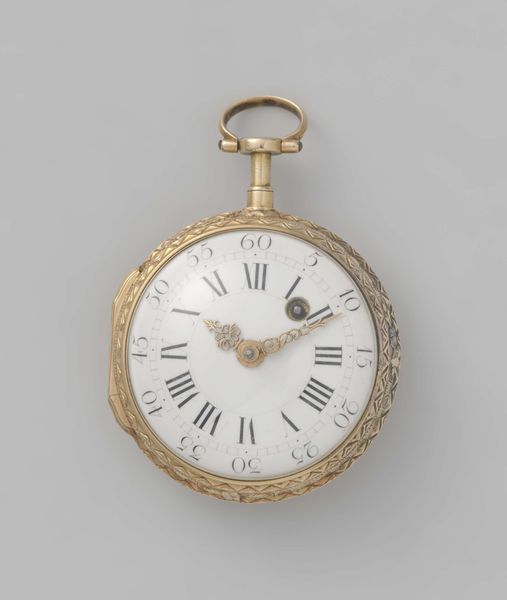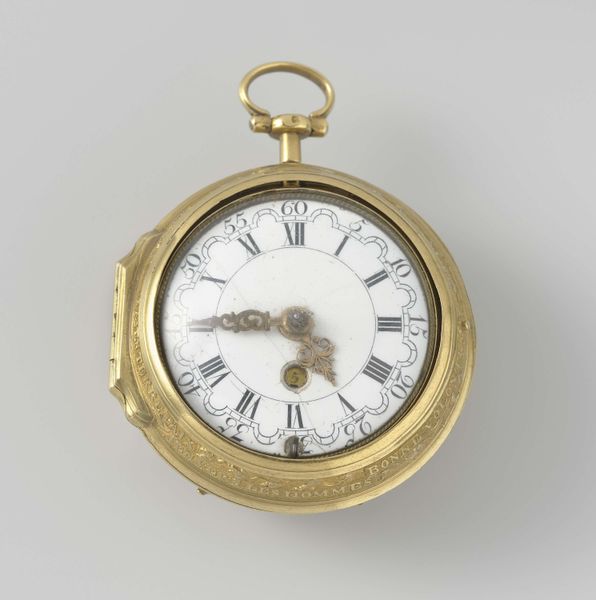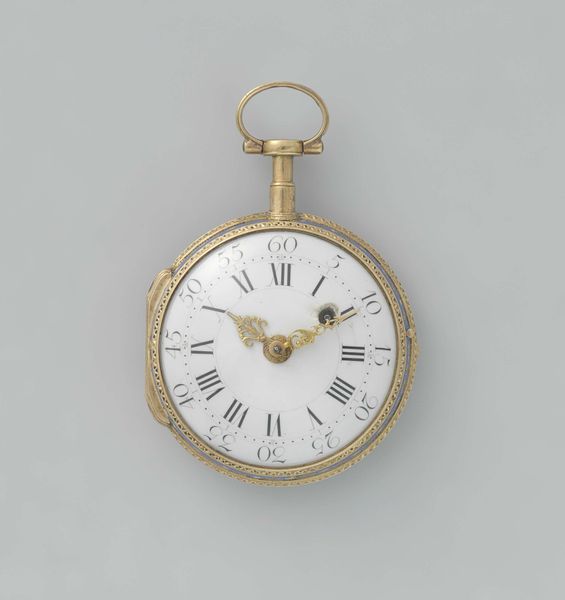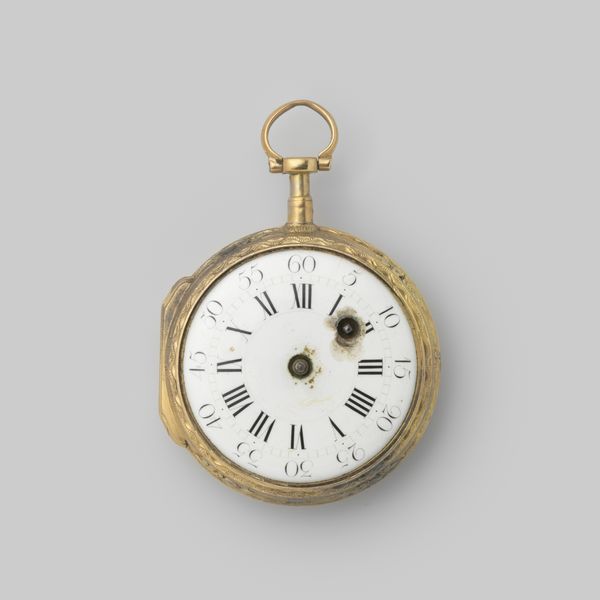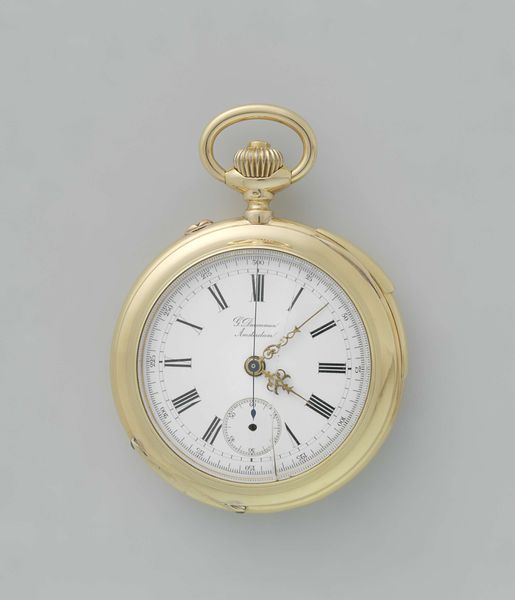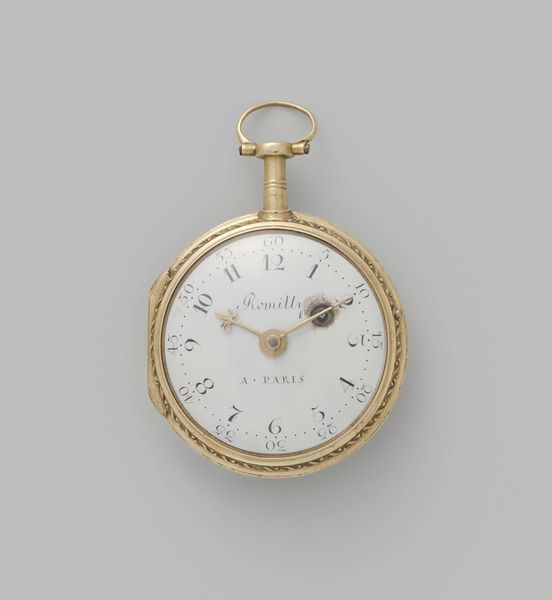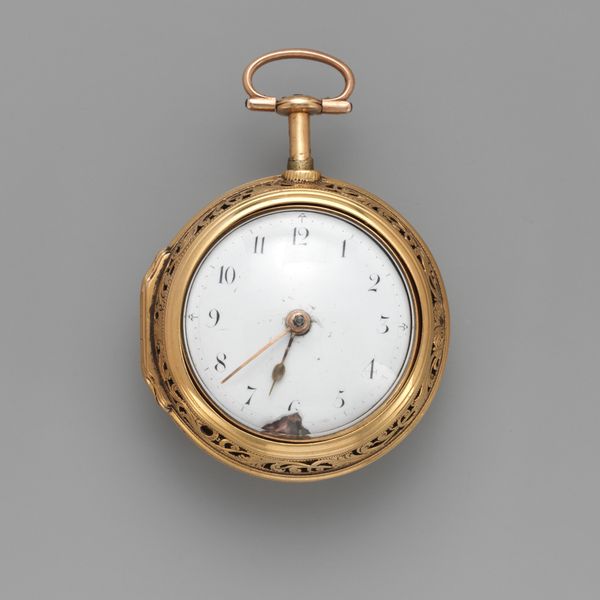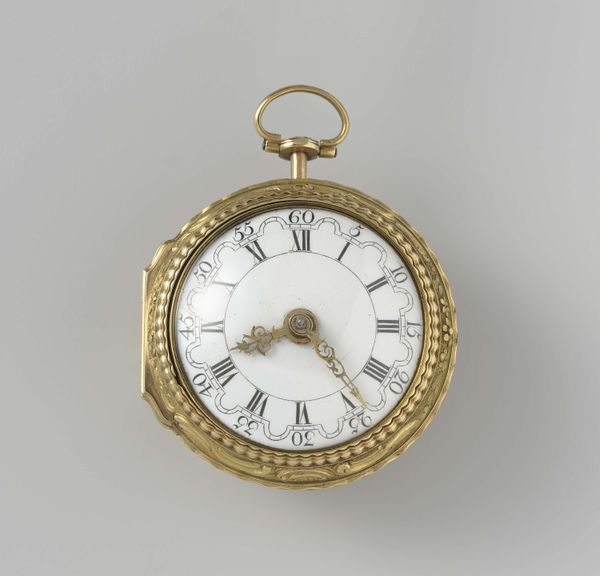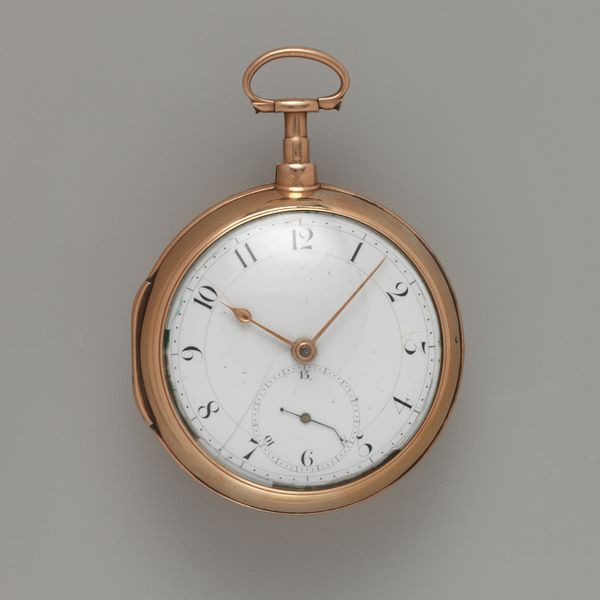
photography
#
portrait
#
photography
#
classicism
#
academic-art
#
decorative-art
#
miniature
Copyright: Rijks Museum: Open Domain
Curator: Before us we have a pocket watch, a beautiful example of early 19th-century horology created by F. Breul between 1800 and 1815. Editor: My first thought? What a striking visual balance. The cool, spacious face and the gold embellishments give it an almost celestial quality. Curator: Yes, it certainly reflects the refined aesthetics of the era, doesn’t it? Watches like this weren't just time-telling devices, but also status symbols, especially in the rising merchant class. Ownership advertised both punctuality and wealth. Editor: Absolutely. The Roman numerals especially project an enduring link to the authority of the past. But what really fascinates me is the inclusion of this sort of blue-colored, fan-like dial at the bottom; what purpose did it serve? Curator: Ah, a subtle and rare aesthetic choice: that aperture showcases the phases of the moon! Notice also the delicate filigree around the outer rim. Craftsmanship of this order underscores its value in its own time and afterward. Editor: Indeed! Thinking of the moon and time passing...the use of such imagery really underscores how deeply humanity feels time as part of a natural cosmic order. Does this object carry evidence of repair or restoration? Curator: Minimal I believe; it speaks to the high standards of design for such important, treasured pocket objects, built to withstand the vicissitudes of changing styles as it moved through historical and ownership contexts. One might look at that circle at the top where the chain or fob once attached, and the many hands whose hours it measured through revolution and restoration. Editor: To me, the beauty of a watch like this lies not just in its mechanics, but in the narrative it encapsulates: of industry, craft and enduring human fascination with temporality. Curator: Precisely. The piece, ultimately, serves as both an artifact and a miniature portrait of its era’s values.
Comments
No comments
Be the first to comment and join the conversation on the ultimate creative platform.
